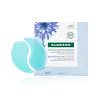What's inside
What's inside
 Key Ingredients
Key Ingredients

 Benefits
Benefits

 Concerns
Concerns

 Ingredients Side-by-side
Ingredients Side-by-side

Water
Skin ConditioningGlycerin
HumectantSnail Secretion Filtrate
Skin ConditioningNiacinamide
SmoothingCarrageenan
1,2-Hexanediol
Skin ConditioningCeratonia Siliqua Gum
EmollientBetaine
HumectantHydroxyacetophenone
AntioxidantAllantoin
Skin ConditioningChlorphenesin
AntimicrobialCyamopsis Tetragonoloba Gum
Emulsion StabilisingCalcium Chloride
AstringentButylene Glycol
HumectantSucrose
HumectantCellulose Gum
Emulsion StabilisingAdenosine
Skin ConditioningPotassium Chloride
Dipotassium Glycyrrhizate
HumectantEthylhexylglycerin
Skin ConditioningPEG-90m
Emulsion StabilisingWater, Glycerin, Snail Secretion Filtrate, Niacinamide, Carrageenan, 1,2-Hexanediol, Ceratonia Siliqua Gum, Betaine, Hydroxyacetophenone, Allantoin, Chlorphenesin, Cyamopsis Tetragonoloba Gum, Calcium Chloride, Butylene Glycol, Sucrose, Cellulose Gum, Adenosine, Potassium Chloride, Dipotassium Glycyrrhizate, Ethylhexylglycerin, PEG-90m
Water
Skin ConditioningCaprylic/Capric Triglyceride
MaskingGlycerin
HumectantPentylene Glycol
Skin ConditioningAlgin
MaskingCentaurea Cyanus Flower Water
Skin ConditioningSodium Hyaluronate
HumectantCI 42090
Cosmetic ColorantButylene Glycol
HumectantCalcium Sulfate Hydrate
AbrasiveHesperidin Methyl Chalcone
AntioxidantPolyglyceryl-4 Caprate
EmulsifyingSodium Dextran Sulfate
Gel FormingTetrasodium Glutamate Diacetate
Tetrasodium Pyrophosphate
BufferingTocopheryl Acetate
AntioxidantXanthan Gum
EmulsifyingWater, Caprylic/Capric Triglyceride, Glycerin, Pentylene Glycol, Algin, Centaurea Cyanus Flower Water, Sodium Hyaluronate, CI 42090, Butylene Glycol, Calcium Sulfate Hydrate, Hesperidin Methyl Chalcone, Polyglyceryl-4 Caprate, Sodium Dextran Sulfate, Tetrasodium Glutamate Diacetate, Tetrasodium Pyrophosphate, Tocopheryl Acetate, Xanthan Gum
 Reviews
Reviews

Ingredients Explained
These ingredients are found in both products.
Ingredients higher up in an ingredient list are typically present in a larger amount.
Butylene Glycol (or BG) is used within cosmetic products for a few different reasons:
Overall, Butylene Glycol is a safe and well-rounded ingredient that works well with other ingredients.
Though this ingredient works well with most skin types, some people with sensitive skin may experience a reaction such as allergic rashes, closed comedones, or itchiness.
Learn more about Butylene GlycolGlycerin is already naturally found in your skin. It helps moisturize and protect your skin.
A study from 2016 found glycerin to be more effective as a humectant than AHAs and hyaluronic acid.
As a humectant, it helps the skin stay hydrated by pulling moisture to your skin. The low molecular weight of glycerin allows it to pull moisture into the deeper layers of your skin.
Hydrated skin improves your skin barrier; Your skin barrier helps protect against irritants and bacteria.
Glycerin has also been found to have antimicrobial and antiviral properties. Due to these properties, glycerin is often used in wound and burn treatments.
In cosmetics, glycerin is usually derived from plants such as soybean or palm. However, it can also be sourced from animals, such as tallow or animal fat.
This ingredient is organic, colorless, odorless, and non-toxic.
Glycerin is the name for this ingredient in American English. British English uses Glycerol/Glycerine.
Learn more about GlycerinWater. It's the most common cosmetic ingredient of all. You'll usually see it at the top of ingredient lists, meaning that it makes up the largest part of the product.
So why is it so popular? Water most often acts as a solvent - this means that it helps dissolve other ingredients into the formulation.
You'll also recognize water as that liquid we all need to stay alive. If you see this, drink a glass of water. Stay hydrated!
Learn more about Water